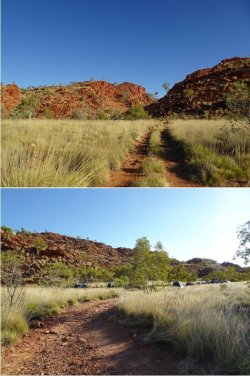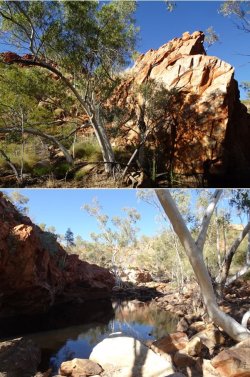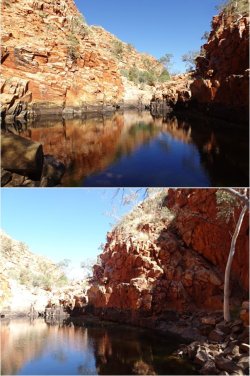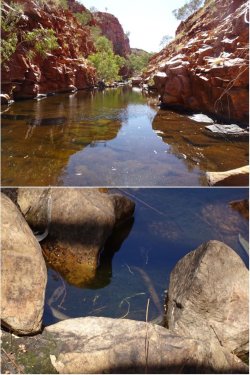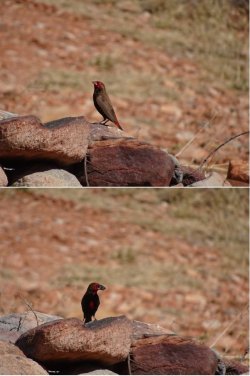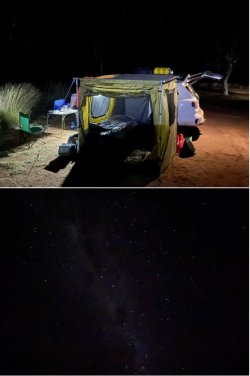Then it was out of the park and through to Nullagine (between Marble Bar and Newman for the night, before beelining to Cue the next day.
After a 720-click drive, a legendary Cueburger and a bottle of Far-Cue (

) red at the Murchison Club Hotel is mandatory.

The run home the next day was punctuated with a fair number of extra-wide loads on Great Northern Highway. It’s highly advisable to have a two-way radio and be monitoring Channel 40 on that road.
For those unfamiliar with this stuff:
Loads over a certain width need a front and rear pilot; extra-wide loads have the same with the front pilot running well ahead, followed by a Department of Transport escort that looks like police with red/blue party lights. They mercilessly force you off the road to a halt. I imagine they assume most LVs do not have a radio; even If you do, they hardly need to engage with a car and make unnecessary chatter. I only pipe up where absolutely necessary; it is better to listen - and just be aware of just how well those big boys and girls are doing their job.
When another truck is approaching, the pilot will advise words like: “Two at 3.8 metres.” Or “Three at 5 metres.” to indicate the number of wide vehicles in the convoy and their width. It may then involve some juggling to get an approaching vehicle off the road entirely and safely to a halt without damaging road infrastructure. I think that explains why lead pilots often seem to be so far in advance of the main convoy.
If going in the same direction, radio communication with the pilots is the only sensible way to overtake these loads. Once you advise being on-channel, they will work graciously and effectively with you and the convoy drivers to bring you around as expeditiously and safely as possible.
Listening to the radio talk, the courtesy level and professionalism amongst truckers and with other travellers is impeccable, and they really appreciate LV (light vehicle) drivers who have radios and use them when advisable. In particular, anyone towing a caravan up there without having radio comms would, in my view, be at best stupid and at worst a major menace. However, I think it’s unlikely that would be common.
In these pics, they had brought the caravan (sitting behind the DoT escort) and another truck around the load trucks a little further back (I could hear that the caravanner was on-channel, and then the solo LV was being brought around. Those haulpak bogies were 5m wide, IIRC.
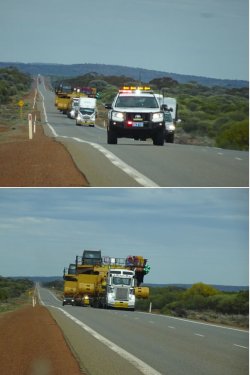
And that’s it. Mission finally accomplished!















